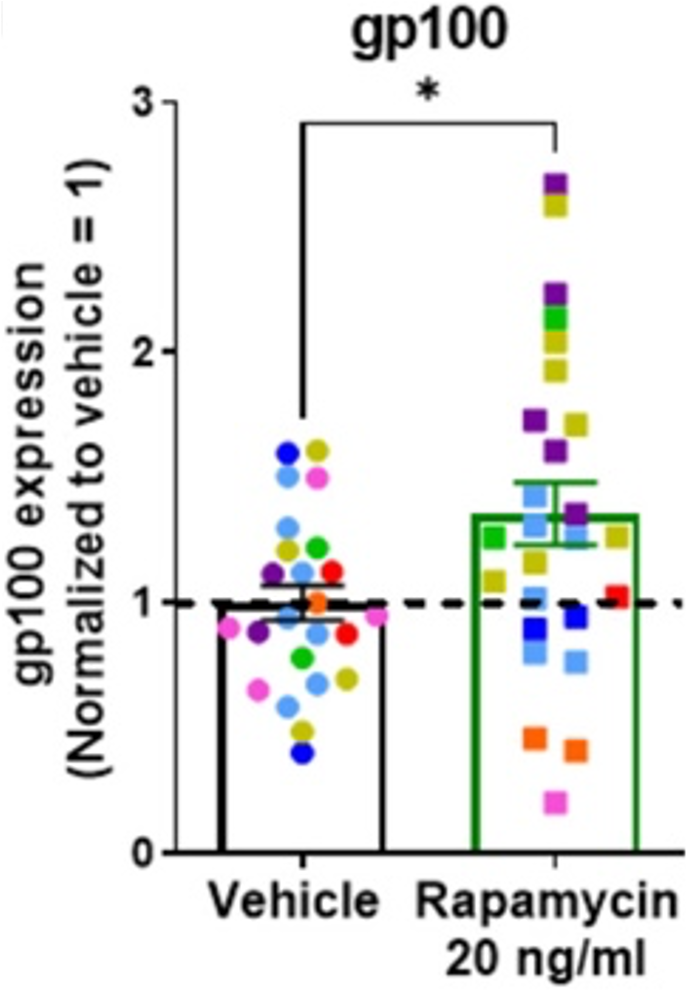Key Points:
- Topical application of rapamycin to human hair follicles (HFs) elevates the production of melanin — the pigment that gives hair its color.
- Rapamycin increases the duration of time hair follicles spend in the anagen phase — the active hair growth phase.
- Hair coloration capacity is restored by treating graying HFs with rapamycin.
Perhaps the most classic feature of aging is gray hair. Like aging itself, the hair-graying process is thought by many to be irreversible. However, it was recently discovered that hairs become gray due to trapped pigment-producing stem cells. Therefore, restoring the capacity of these stem cells to produce coloration may be a feasible treatment for reversing gray hair growth.
Exemplifying this, researchers from the University of Miami Miller School of Medicine report in EMBO Reports that rapamycin regulates human HF growth and pigmentation. Suzuki and colleagues show that rapamycin elevates the production of melanin — the pigment that colors hair. Rapamycin also increases the anagen phase duration and promotes gray hair reversal.
Rapamycin Restores Hair Coloration Capacity
From our hair to our skin, melanin is the natural pigment that colors our cells. Hair graying occurs when melanin is unable to make it into our hair cells. To determine the effects of rapamycin on hair graying, Suzuki and colleagues collected HF samples from the scalps of individuals undergoing a face-lifting procedure. The HFs were kept alive and grown in a dish for experimentation. After treating the HFs with rapamycin for seven days, the researchers found that melanin production was elevated.

Our hair cycles through three phases, including the anagen phase. The anagen phase is the active growth phase, during which melanin is synthesized and transferred to hair cells. Suzuki and colleagues found that treating HFs with rapamycin prolongs the duration of the anagen phase. Paired with elevated melanin production, these findings suggest that rapamycin increases colored hair growth.

Each of our hairs is made up of skin cells called keratinocytes, which stack on top of each other during the anagen phase of hair growth. Meanwhile, melanin is transferred to the keratinocytes from melanin-producing cells. This transfer of melanin to our hair can be measured with a protein called gp100. Suzuki and colleagues found that rapamycin increased gp100 protein levels, suggesting that rapamycin increases the transfer of hair-coloring melanin into newly forming strands of hair.

To test if rapamycin can reverse hair graying, Suzuki and colleagues treated graying/white HFs with the drug. They found that only HFs from some donors responded. Of these responding HFs, rapamycin was shown to increase melanin production. These findings suggest that rapamycin could reverse hair graying in some people.
Rapamycin: The Anti-Aging Pharmaceutical
Rapamycin was discovered in a volcano crater on Easter Island. It is currently prescribed as an immunosuppressant drug to prevent the rejection of donated organs. However, at higher doses, rapamycin may have an immune system-enhancing effect. Rapamycin has been shown to reverse muscle and brain aging while increasing the lifespan of mice. Now, rapamycin seems to reverse hair aging as well. Considering that rapamycin is one of the few anti-aging compounds shown to increase mouse lifespan reliably and robustly, it may be one of the best options for longevity interventions.